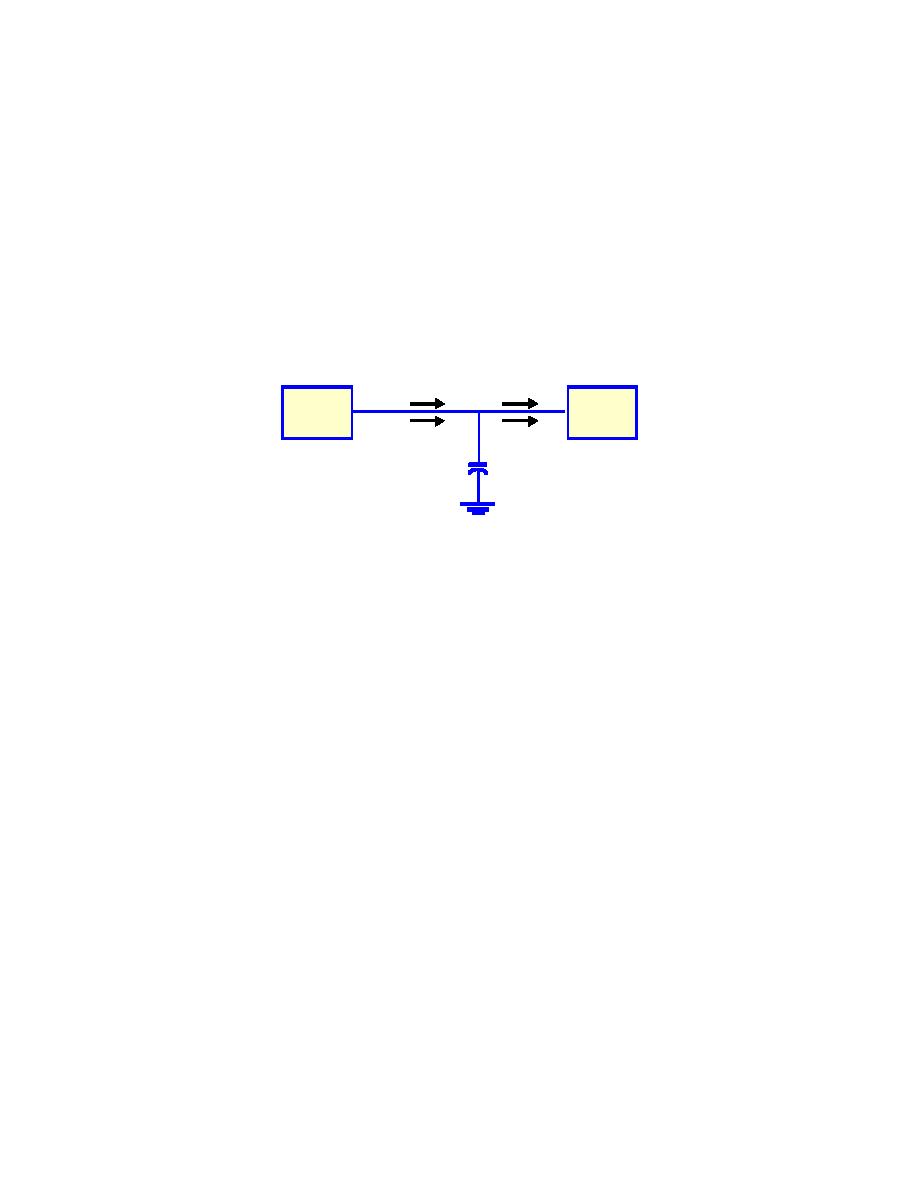
UFC 3 -520-01
June 10, 2002
APPENDIX C
CAPACITORS FOR POWER FACTOR CORRECTION
C-1
PURPOSE.
C-1.1
Capacitors are normally used to improve power factor. Although power factor
correction capacitors are not usually applied to military interior electrical systems, their
use is discussed here for completeness. Figure C -1 shows a typical configuration in
which a shunt capacitor is added to improve the power factor.
Figure C -1. Capacitor Installation for Power Factor Correction
P
P
Source
Load
QT = QL - QC
QL
Capacitor
C-1.2
Power factor correction is usually justified for the following reasons:
To improve voltage.
To lower the cost of energy, when the electric utility rates vary with the power factor
at the metering point.
To reduce the energy losses in conductors.
To utilize the full capacity of transformers, switches, overcurrent devices, buses, and
conductors for active power predominantly, thereby lowering the capital investment
and annual costs.
To reduce overload of fully loaded motors.
C-1.3
Capacitor installations can have adverse effects on facility operation. The
following effects must be considered as part of the overall design:
Capacitor switching causes surge voltages, which can necessitate the use of surge
protection.
Capacitors can affect the operation of nonlinear loads.
C-1.4
Although capacitors are commonly used for power factor correction, their use
requires careful evaluation of the overall facility design. Without a proper design
evaluation, capacitors can introduce other problems that offset the potential benefit of a
higher power factor.
C-1


 Previous Page
Previous Page
